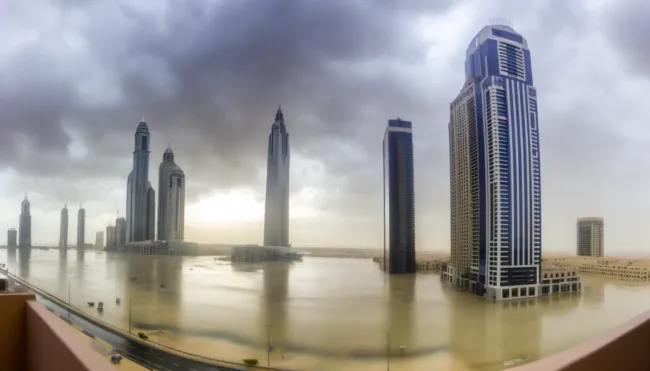Shock and water: How a simple technique turned Dubai’s skyscrapers into islands
One of the most urgent questions causing alarm globally is the cause behind the catastrophic flash floods that submerged Dubai, a city famed for its towering skyscrapers and status as a global tourism hub. This devastating event brought the city to a standstill, affecting millions and halting daily operations, including major flight cancellations and school closures.
According to insights from a Bloomberg report, the unexpected deluge that overwhelmed parts of the UAE can be linked to cloud seeding. This weather modification technique involves dispersing substances like silver iodide and potassium iodide into the air to enhance rainfall. Used since 2002 by the UAE to combat water scarcity driven by an arid climate and rapid urbanization, this method unexpectedly played a role in the disaster. Ahmed Habib, a specialist meteorologist quoted in the report, highlighted the execution of seeding operations on April 14th and 15th, which aimed to exploit convective cloud formations to increase rainfall.
The repercussions of the floods were immediate and severe. Dubai International Airport saw significant disruptions, leading to suspended operations and ongoing flight disturbances. The local government was compelled to issue warnings, urging residents to stay indoors due to safety concerns. The floods starkly highlighted the inadequacy of the city’s drainage infrastructure, exacerbating the situation and raising questions about urban planning and disaster preparedness.
The connection between cloud seeding and such severe weather events suggests a need for a reevaluation of weather modification strategies, particularly in regions susceptible to extreme weather fluctuations. Ensuring robust infrastructure to handle such events is imperative to mitigate future risks. Enhanced drainage systems and urban planning must be prioritized to safeguard against the potential side effects of cloud seeding in arid regions like the UAE.
In conclusion, while cloud seeding has been a tool for addressing water scarcity, the recent floods in Dubai illustrate the complex interplay between human intervention and natural weather patterns. It underscores the necessity for balanced and cautious approaches to weather modification, especially as cities like Dubai continue to grow and draw in global visitors.
